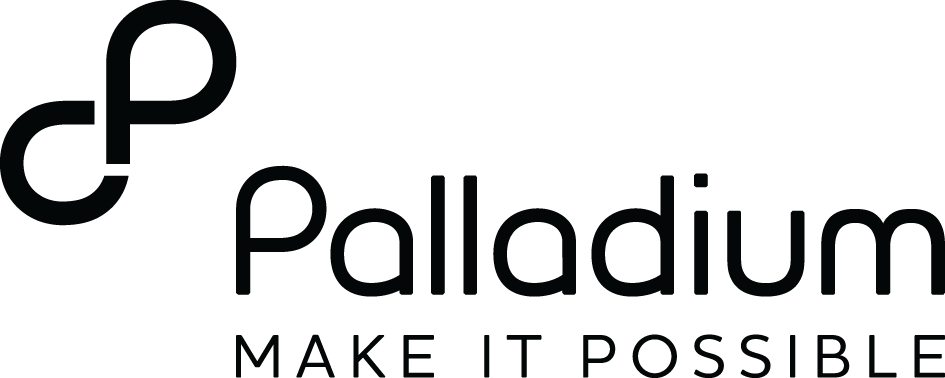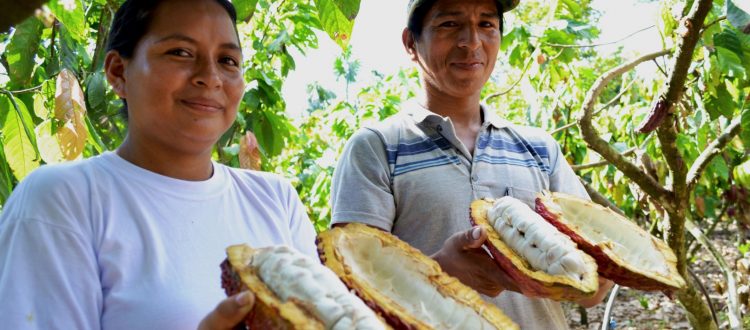Navigating the Last Mile to Inclusive and Sustainable Growth
Palladium’s Director of Thought Leadership, Eduardo Tugendhat, explores the role of a “catalyst” in achieving inclusive growth at scale.
The dirty secret across impact investing, corporate social responsibility and sustainability is that most pilot programs, borne out of good intentions, fail to ever become a self-sustaining force.
Considerable hype and promotion often accompany these projects and usually succeed in creating awareness upon launch. But when the plug is pulled, or when funding runs out, it occurs with little fanfare or enduring results.
Consider Chipotle’s initiative to position its brand against the “industrialized” agricultural complex. In 2014, the fast-casual restaurant chain went on a media blitz to promote its web series, Farmed and Dangerous. The campaign initially put Chipotle in the vanguard of the “clean food” movement. Its management was roundly celebrated for using locally sourced, non-GMO ingredients. But the campaign quickly backfired following a succession of e-coli outbreaks that invited scrutiny into the company’s supply chain.
Chipotle is not alone in seeing its sustainability efforts either stall or misfire altogether. But the breakdown – by virtue of overlooking the intricacies throughout the larger system – underscores one of the biggest obstacles for any enterprise trying to effect positive social change. In this era in which even the bad actors will try to benefit from a socially responsible halo, those committed to a cause can be distinguished by their willingness to collaborate with participants across their value chain to create lasting systemic change. This often requires a catalyzing partner who can map out where their efforts will be most effective and align their goals with those of their stakeholders.
To understand why such a catalyst is so vital, it helps to recognize the disparate roles of those pursuing social change and their inherent limitations. To generalize, most corporate social responsibility, or CSR, programs focus on social and environmental outputs. The aim may be to help as many people as possible, but the organization is often detached from resulting complications. The programs can also struggle to scale when related initiatives fail to attract the commitment of the core business.
Government agencies and grant-makers have a similar top-down focus. The nature of their financing is generally structured to fill temporary funding needs versus “bootstrapping” commercially viable, self-sustaining enterprises.
The perspectives of impact investors can sometimes be the toughest to pin down. Some approach their commitments with an obvious philanthropic bent, whereas others view “market-rate” returns as obligatory. Across this spectrum, all impact investors remain challenged by a limited pipeline of opportunities.
The role of the catalyst is not only to understand the system and the specific aptitudes of the different actors, but to provide the connective tissue that brings these constituencies together around shared objectives and measurable outcomes.
To cite a hypothetical example, a corporate strategy focused on the company’s supply chain may begin with an objective to help X number of smallholder farmers increase yields and provide a pathway out of poverty. This top-down approach creates an aspirational goal, quantifies the desired impact, and (if achieved) benefits the companies bottom line while moving the needle on a social challenge.
What is overlooked are the knock-on effects that can sometimes be more harmful than the identified cause for which they’re trying to solve. If a market doesn’t exist for the increased yield, for instance, the farmers may be worse off when prices plummet from higher productivity. Moreover, what is the environmental impact? Do the measures taken to support biodiversity minimize soil degradation? These factors, if not addressed, could create more pronounced, longer-term challenges.
What’s often conspicuously absent in these independent efforts, is an appreciation for the larger system and the possible links between all of the constituencies involved.
Catalyst in Action
Most industries across both developed and emerging markets have changed dramatically over the past decade. This is due to several factors, but most prominently technological advances, population growth, climate change and shifting global power structures. In food systems, these and other pressures have made the existing framework obsolete.
Nobody is satisfied. Farmers struggle to earn a living wage. In the U.S., amid an economic boom, over 40 million Americans remain food insecure. Supply chains – as Chipotle’s woes established – are woefully inadequate. The scope of the issues is more than any one company, government, or investor can solve on their own.
The Peru Cacao Alliance provides a case study of what’s possible when different stakeholders, aligned behind a shared vision, take a bottom-up approach to rethink the larger system. The Alliance is a USAID-supported public-private partnership created in 2012 to promote fine-flavor cacao cultivation in the Peruvian Amazon. But it wasn’t focused solely on helping farmers expand their productivity. The program solicited cooperation across the supply chain to facilitate transparency and traceability. It channeled funding to new technology and bio-diverse “growing” models to ensure farmers could maximize available land while meeting international standards with regard to quality and supply. And the Alliance helped identify a market opportunity through emphasizing the production of more specialized (and lucrative) varieties of cacao.
Most importantly, the farmers themselves aren’t merely passive beneficiaries on the receiving end of fleeting social largesse. They’re full-fledged business partners. They were called on to articulate the nuanced challenges they face, outline distinct areas of need, and enlist peers so the program could reach critical mass.
Palladium, serving as the catalyst and recognizing the machinations of the larger system, was able to mobilize over 30 different Alliance partners across the local, regional and international markets, in the both the private and public sectors. Collectively, through synthesizing the disparate perspectives, the Alliance was able rethink altogether how the system could accommodate each constituency based on current needs and long-term considerations.
If the effort only focused on the number of farmers receiving help, it would have failed. The success factor was Palladium’s role in identifying the overlapping objectives across the value chain – from the producer cooperatives and technology companies to the U.S. and Peruvian national governments as well as local and regional agencies. Public-sector contributors still get their callout in the 18,000 farming families who have benefitted or the $90 million raised. The real story, though, is the market-led transformation to create a more inclusive and profitable system. Peru went from being a marginal producer and niche player to becoming the No. 2 producer of fine-flavor cacao in the world.
A catalyst doesn’t have to be a third-party consultant. It can be an in-house strategy team with access to adequate resources. It can be an NGO whose specified mission is to create self-sustaining commercial solutions. It can even be a grant-making institution or impact investor that offers matching or “challenge” funds to incentivize and help orchestrate participation. Harvard Professor George Serafeim, suggests that the investor community, in particular, is uniquely positioned as “stewards of the commons” to encourage “pre-competitive” collaborations and instill stability in these partnerships.
It can even be a company, armed with lessons from past mistakes, committed to doing better. It’s worth noting that since its initial missteps, for instance, Chipotle has emerged as a role model in the restaurant space thanks to its approach to reforming its supply-chain. The company began by mapping out the entire ecosystem for each ingredient on its menu, and now requires every supplier to provide the geographical origin of their raw materials and offer environmental metrics such as water usage, energy usage and employee welfare. Often, sustainability efforts can be an iterative process to truly innovate.
The key is that the catalyst can build trust, spark innovation, outline and implement a proof of concept, and then actively structure and raise funds to ensure the initiative takes root. This requires a holistic point of view that appreciates the larger systemic issues and the actors involved, as well as the “unknown” unknowns.
It’s the catalyst who will facilitate the collaboration required to see that good intentions translate into the common good.
This article originally appeared on ImpactAlpha and was republished with permission.

